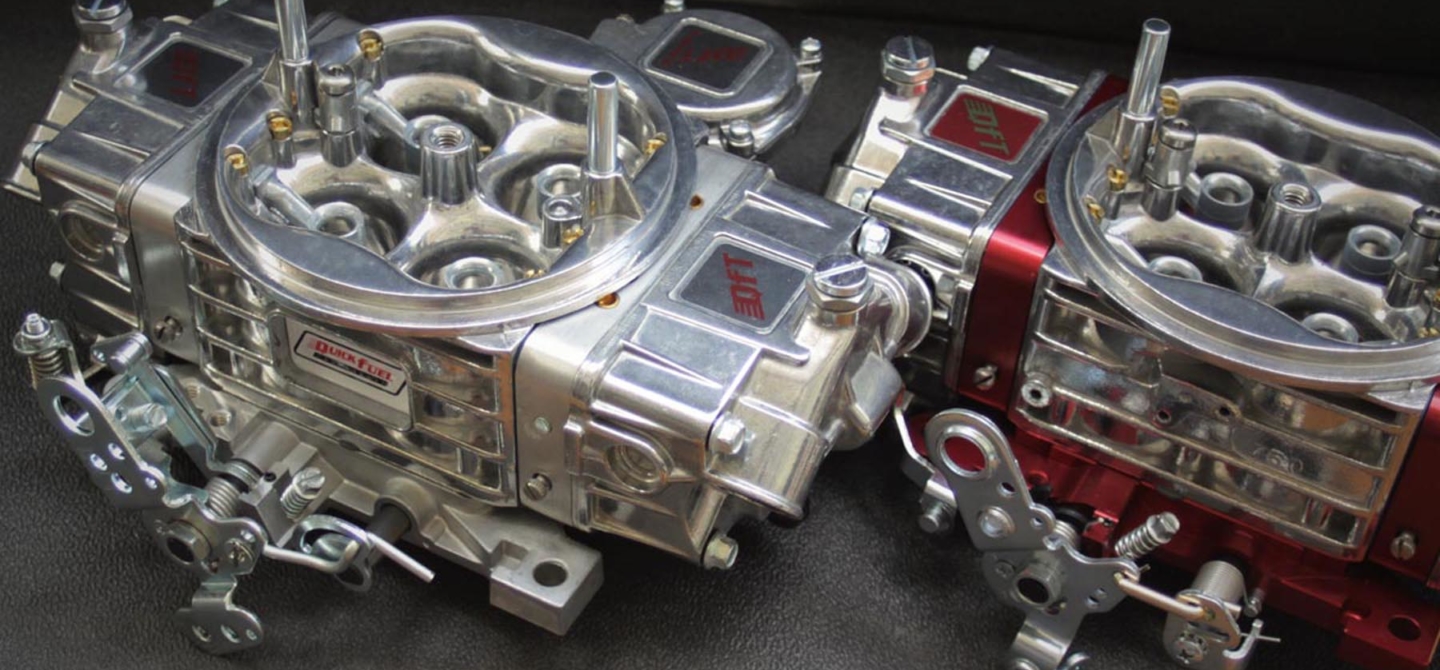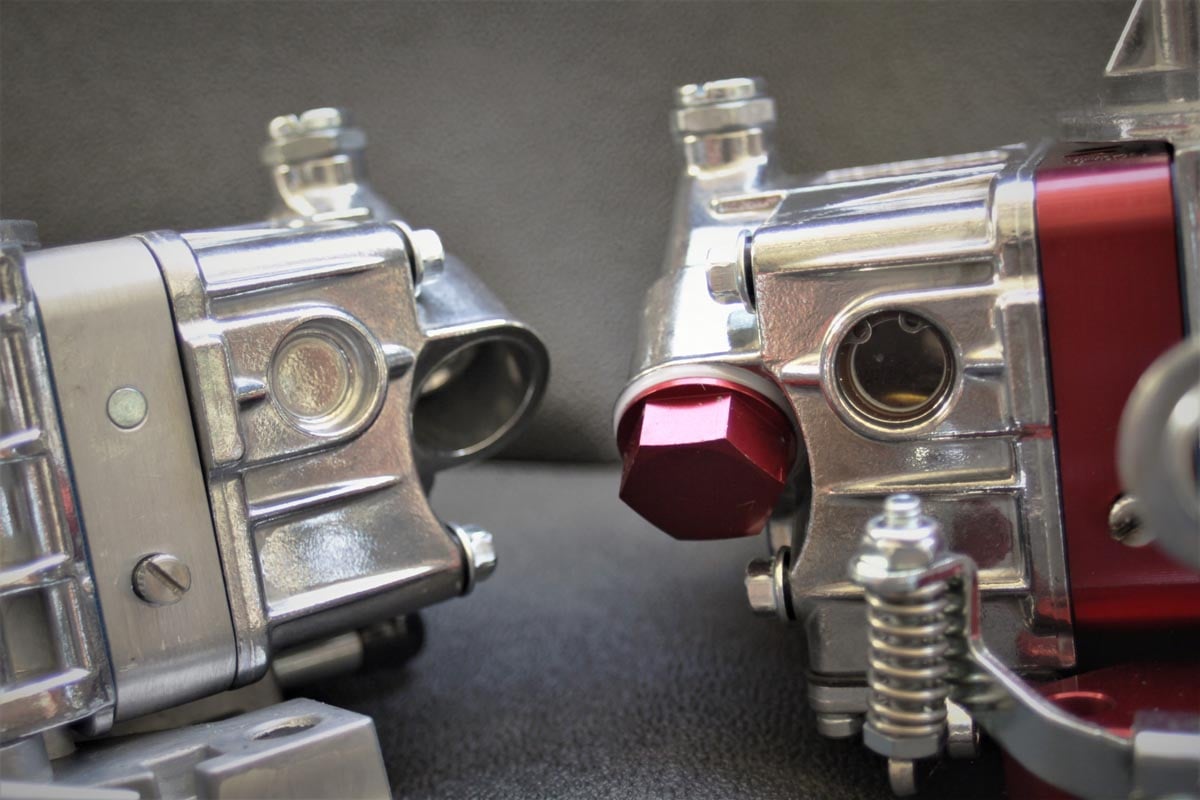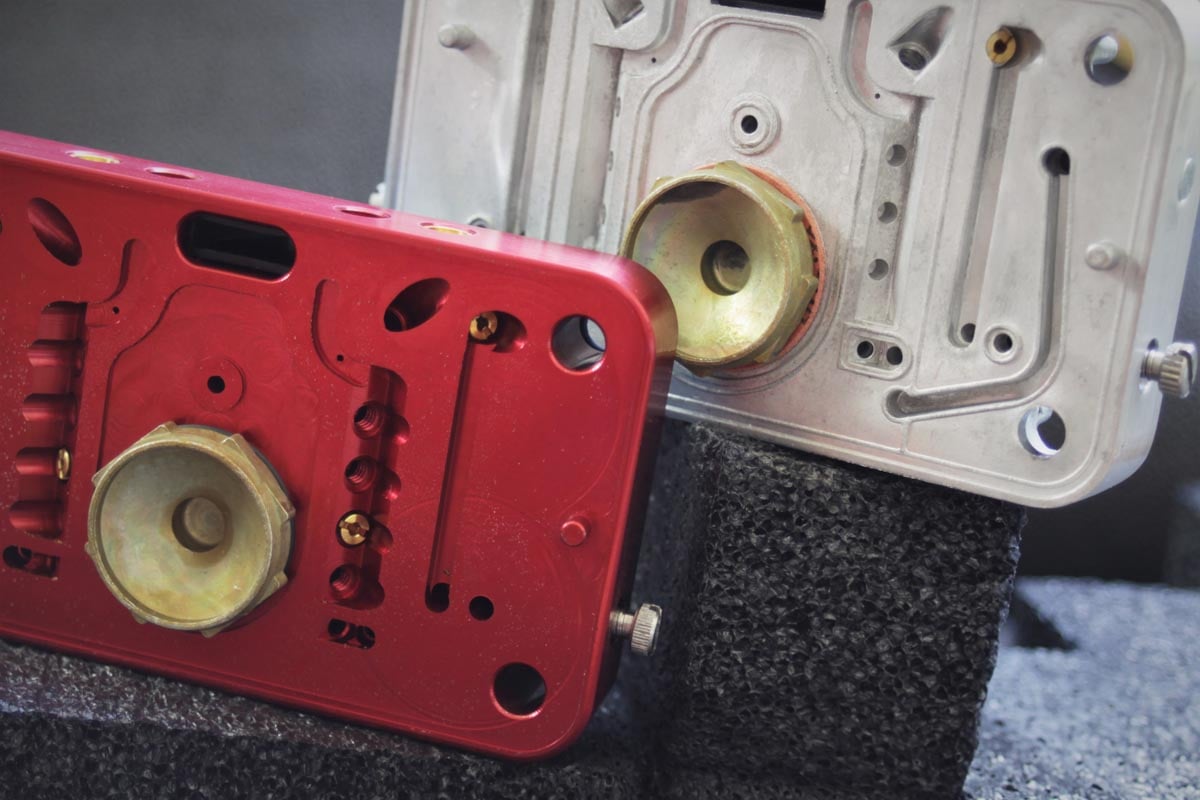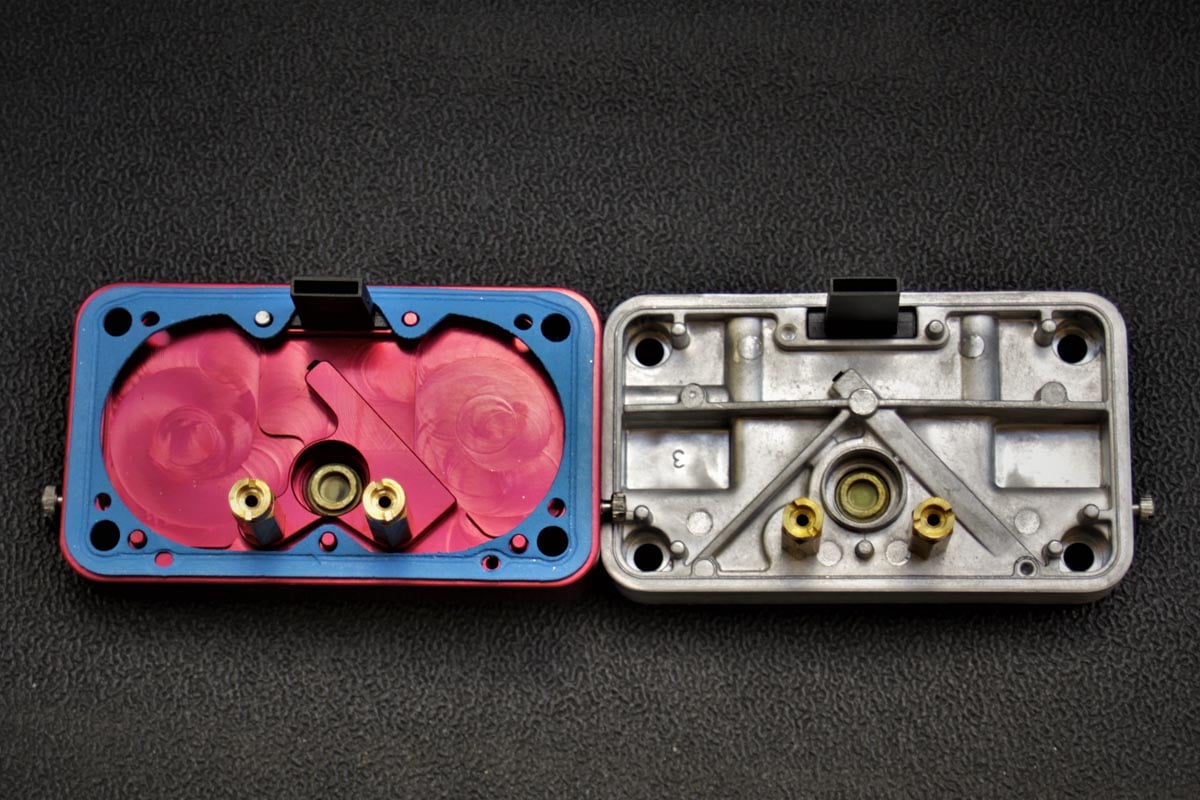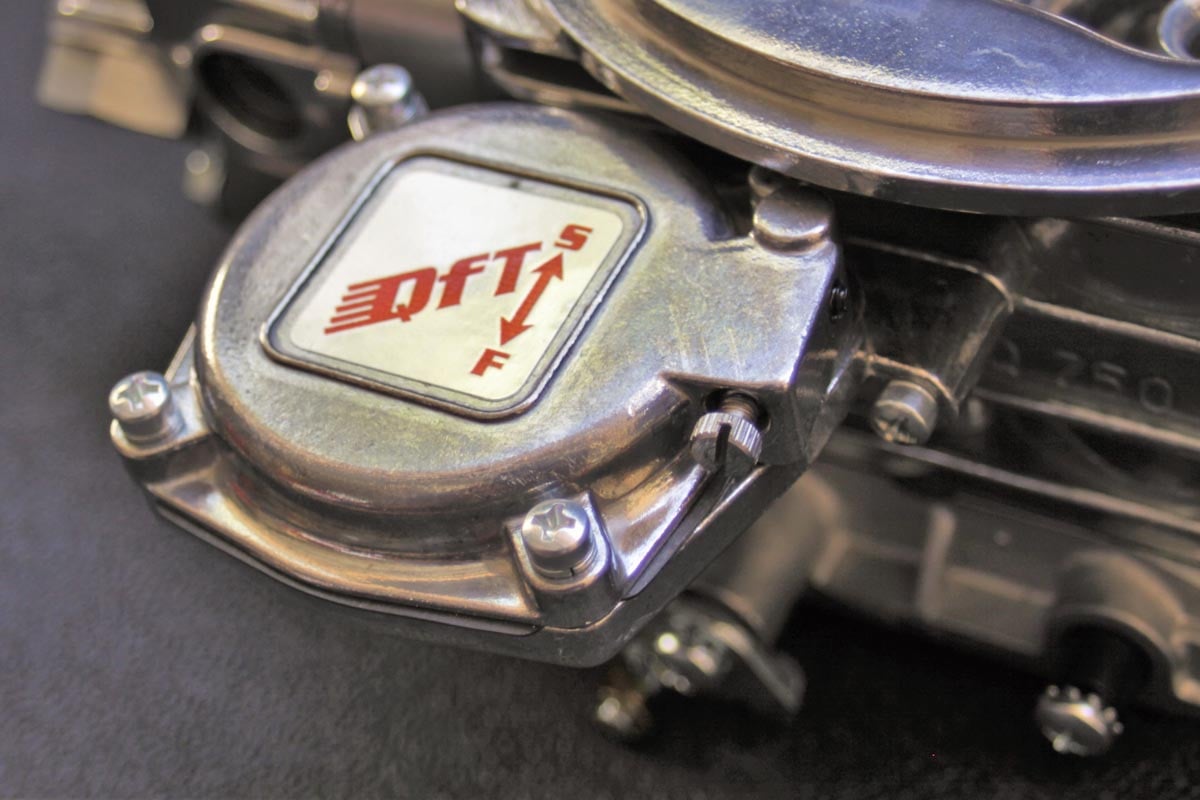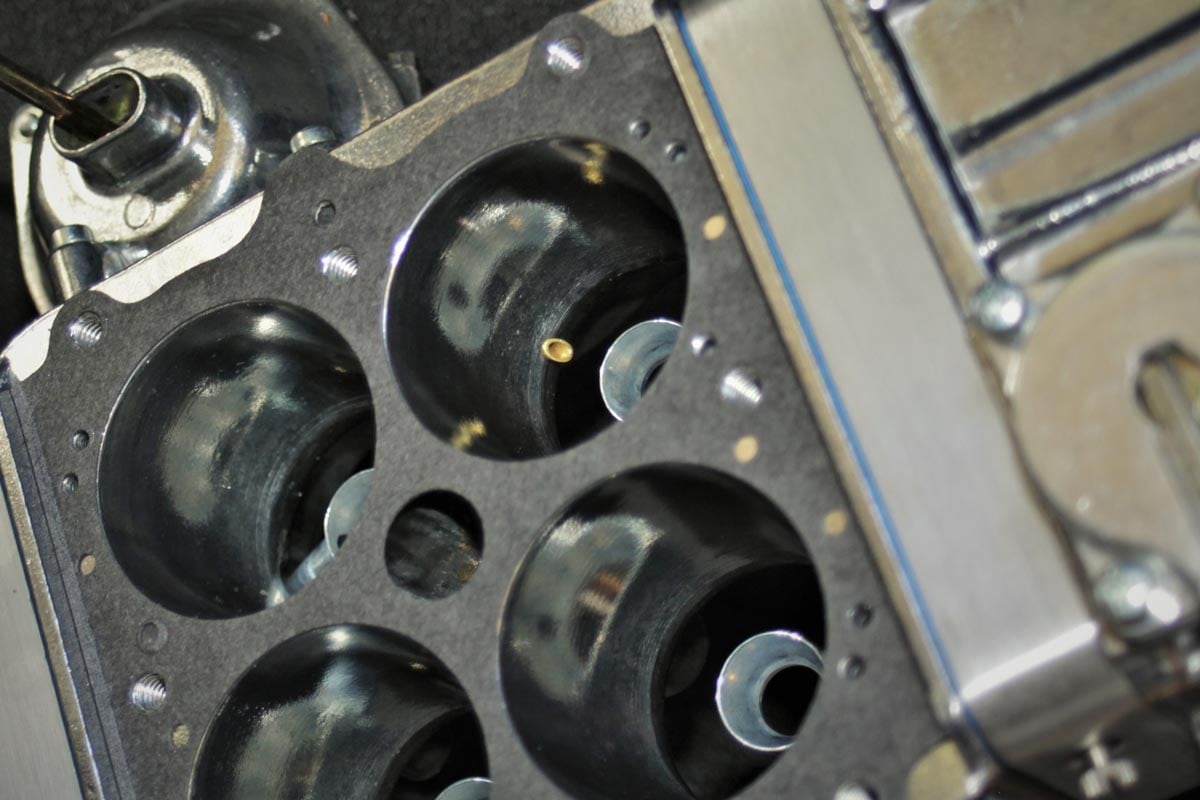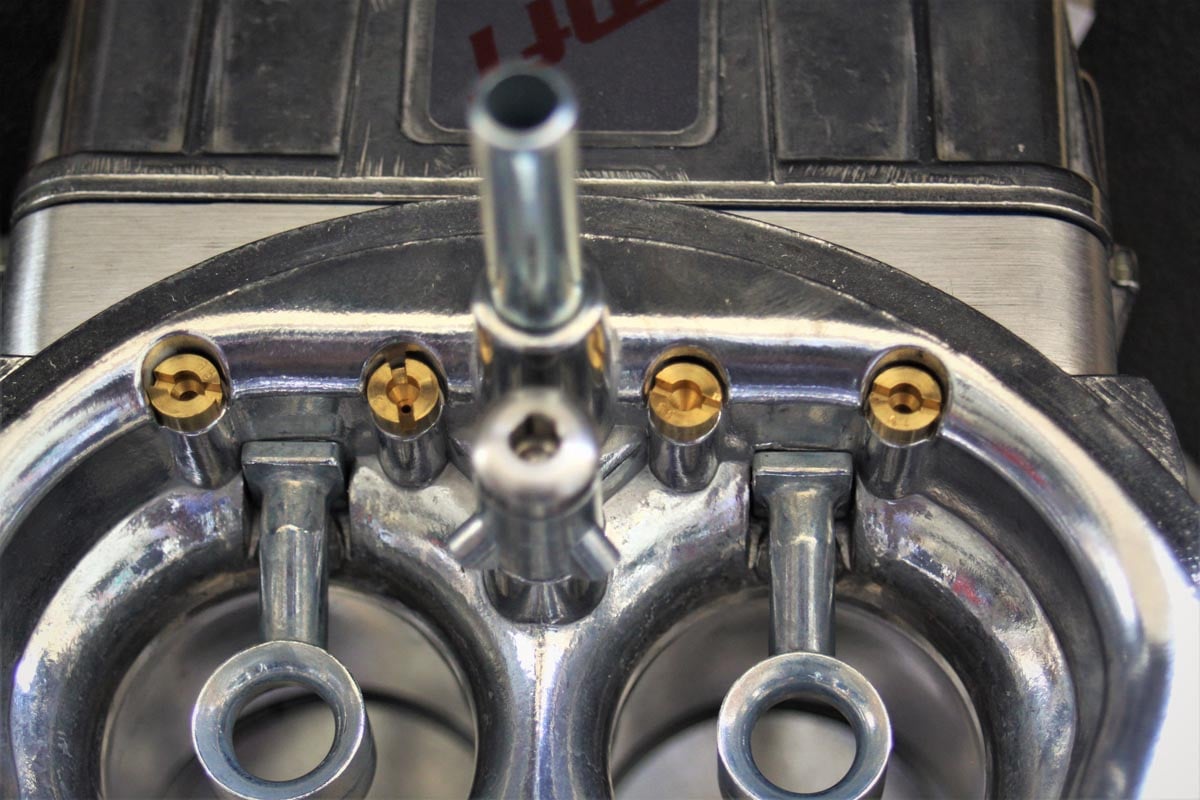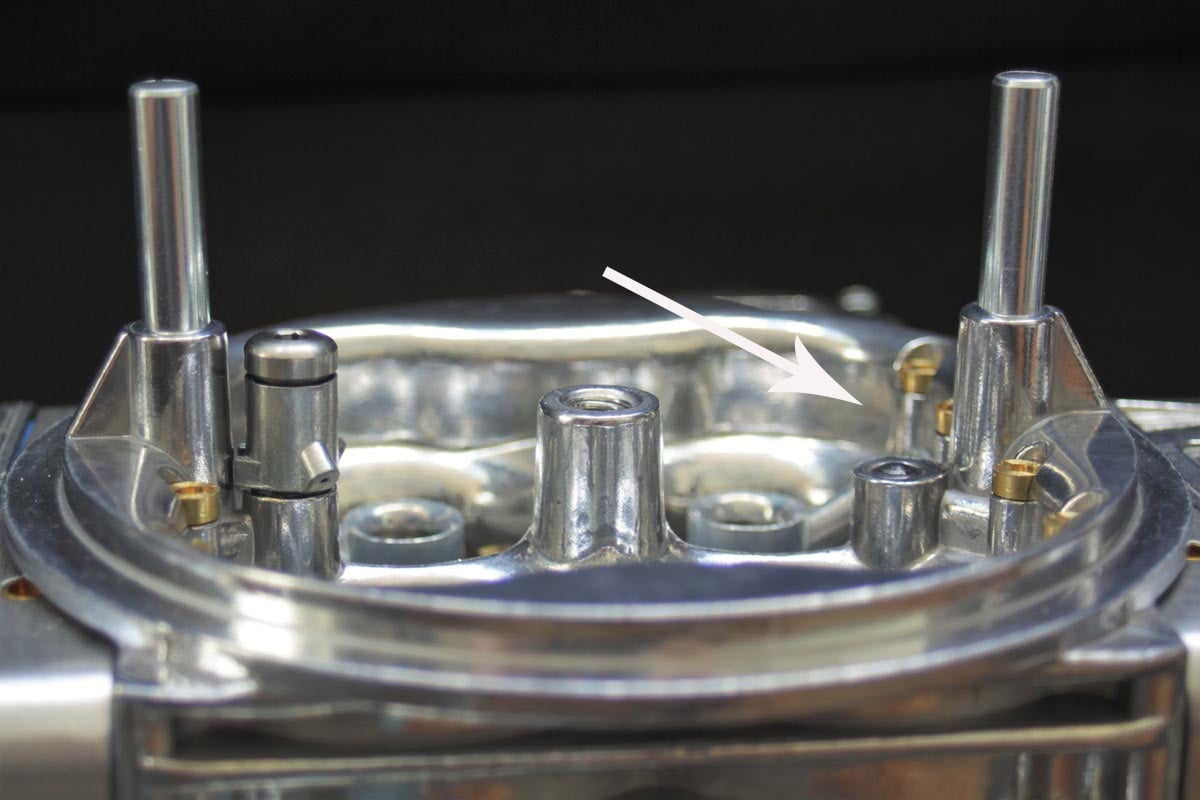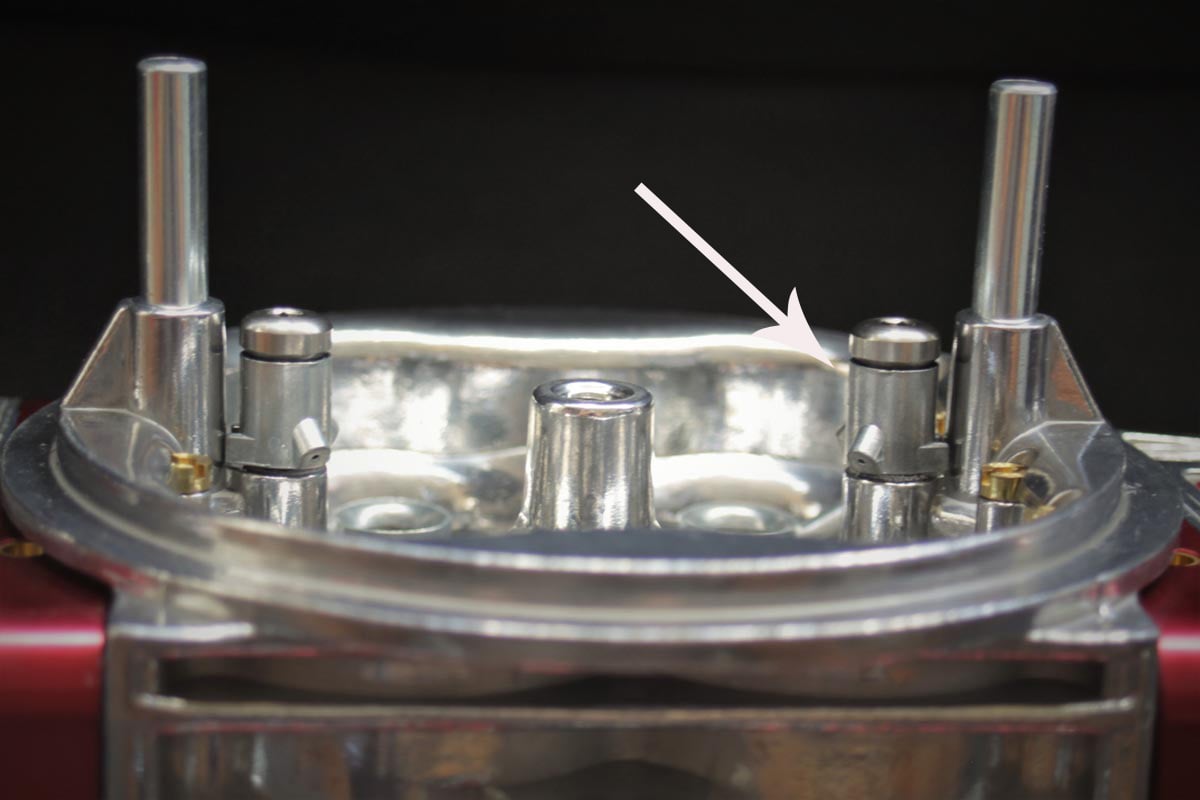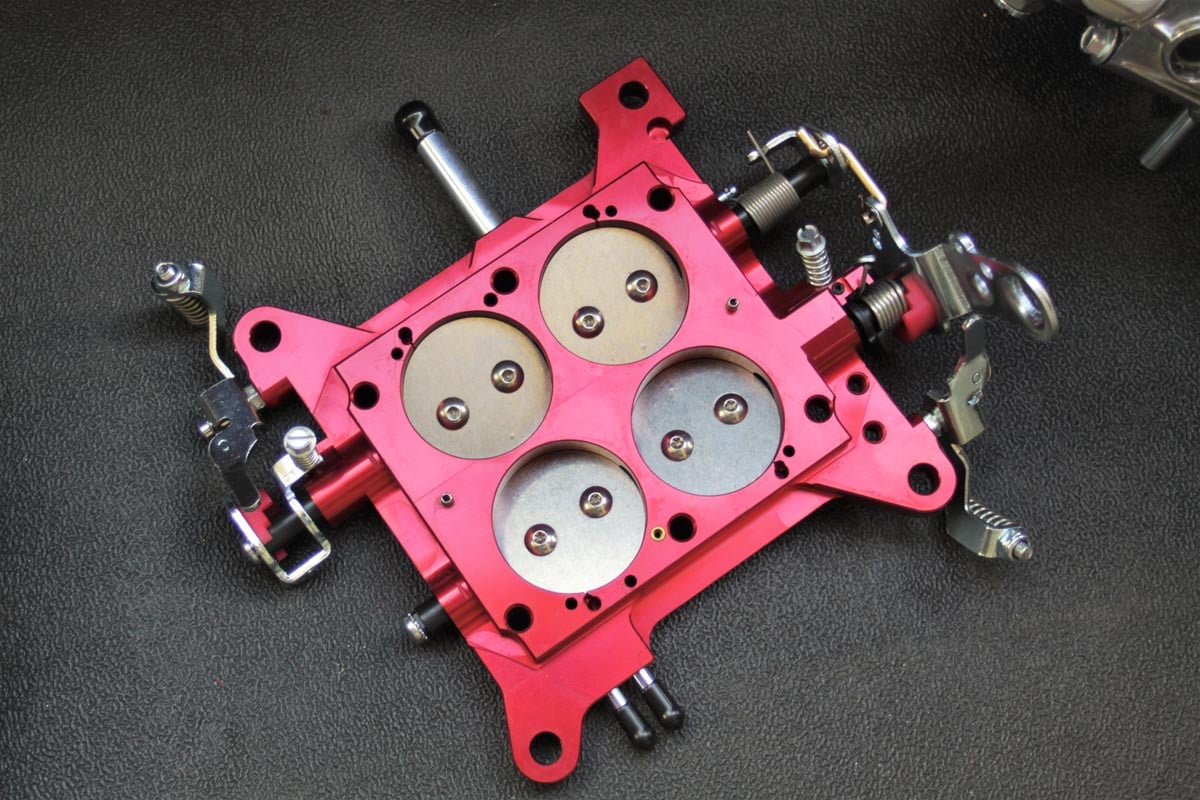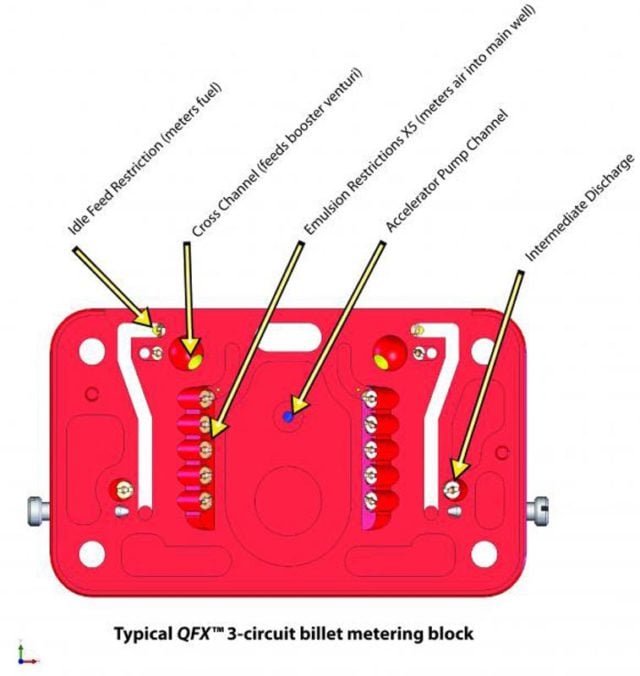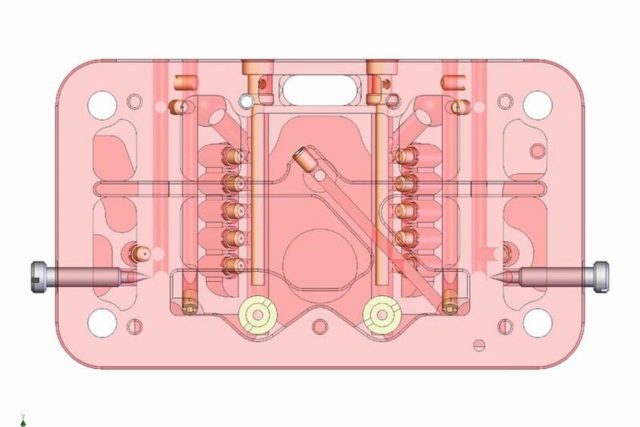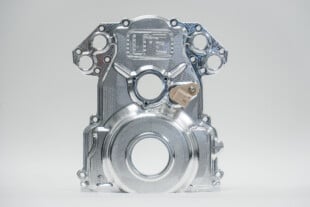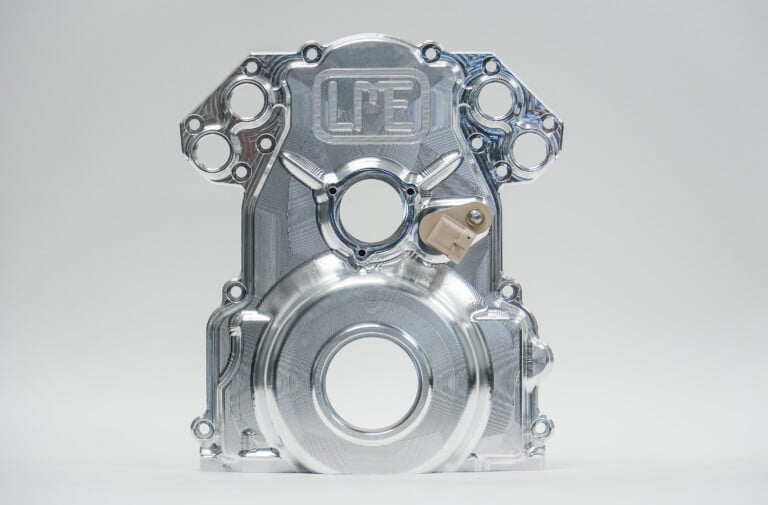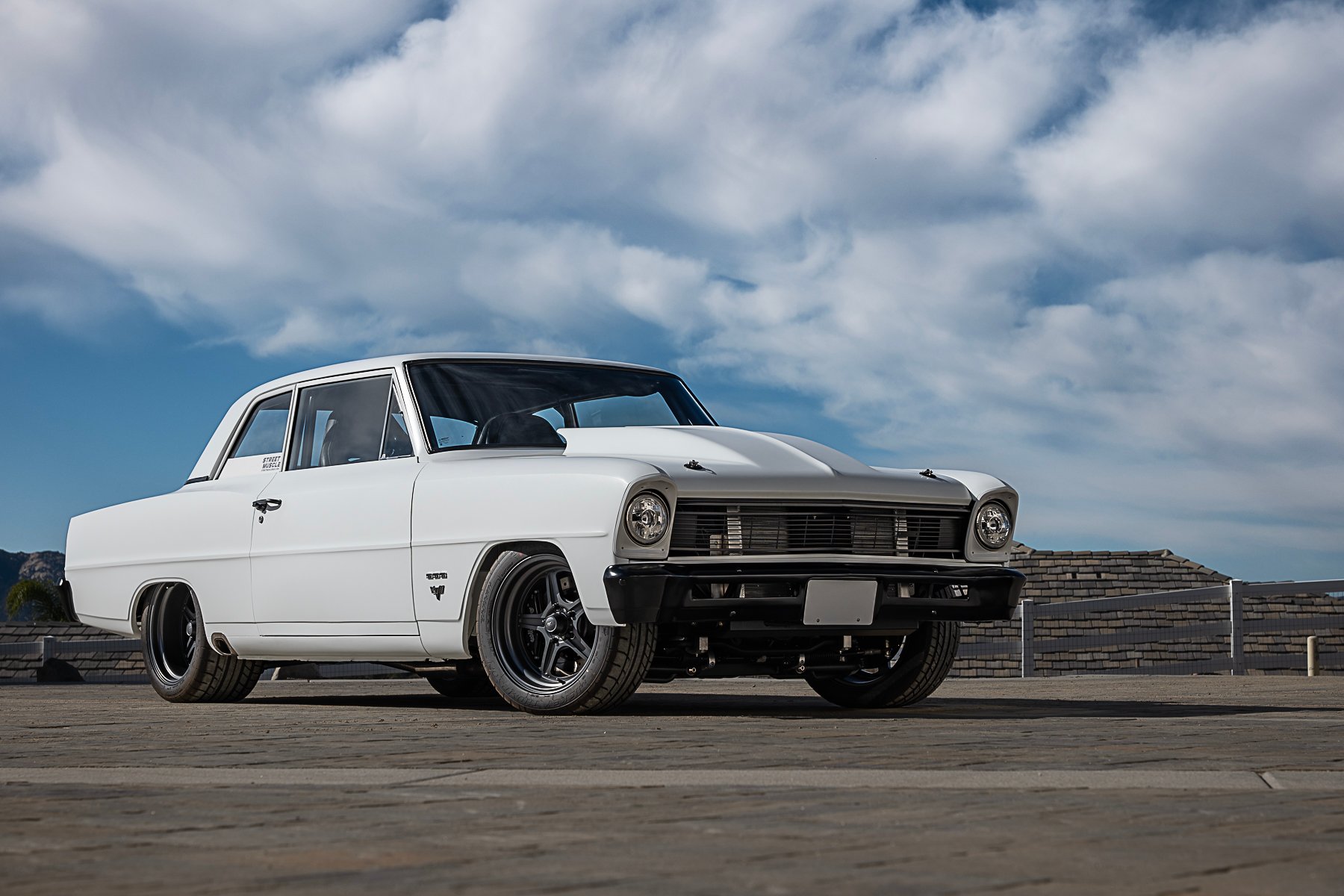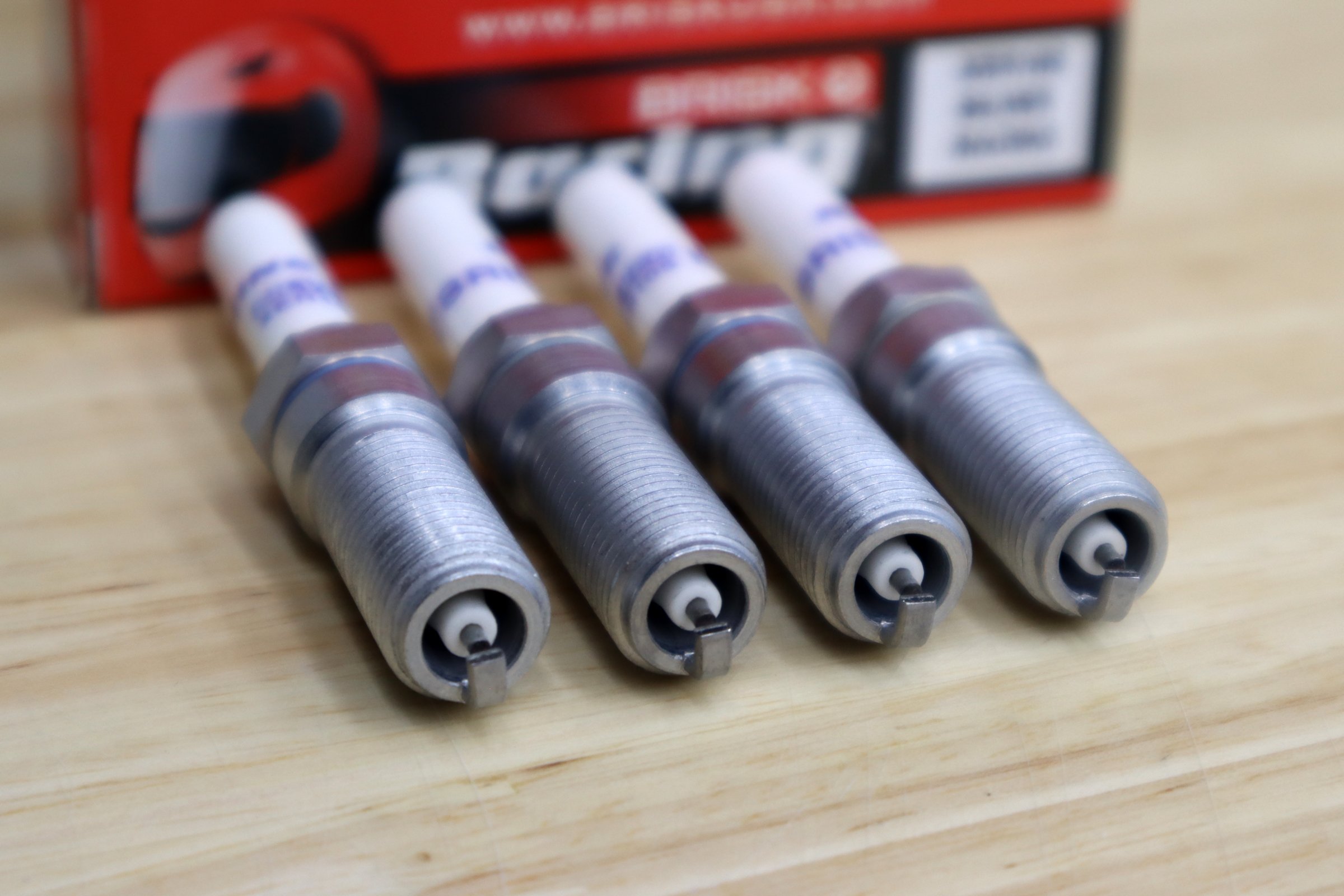There have been a lot of advancements in the world of carburetors, even since the advent of electronic fuel injection. Whether due to competition or not, there’s no denying that today’s enthusiast has a dizzying array of options when it comes to choosing the right carburetor for their application. Thanks to advancements by companies such as Quick Fuel Technology, carburetors are much more adjustable and easier to modify than ever before.
For the additional cost of a race carburetor, there are several upgrades over the street version offered by Quick Fuel Technology that increase reliability and allow for fine-tuning. Their race carbs come with billet baseplates and metering blocks, and as an added bonus, fuel feeds and sight glasses are found on both sides of the fuel bowls.
Race Or Street?
Years ago, if you were racing or dealt with traffic on a “red light to red light basis”, you chose a carburetor specifically designed for “race” applications. If you spent more time in stop-and-go traffic, a street carburetor was most specifically in your future. Today, the lines have blurred considerably in what folks consider a “street car”, and also, what constitutes a “race carburetor”.
More than simply billet pieces, the race-series Q carburetor allows for emulsion tuning with screw-in jets to precisely trim the carb's fuel curve through the entire RPM range. Both street and race carbs benefit from main jet extensions for improved fuel supply. The metering blocks on the right are secondary metering blocks, as noted by the jet extensions and absence of power valves. QFT only uses power valves on the primary and secondary plate in circle track applications.
Horsepower has exceeded what was once reserved for only the highest levels of competition, and cars equipped with power steering, overdrives, street tires, and thousands of miles on their odometers have eclipsed well past what once had the fans standing on their feet at the largest drag racing events in the nation. Likewise, some of the most trick features once only found on the premier race-only carbs have now worked their way into carburetors with vacuum-secondaries and, egad, choke valves!
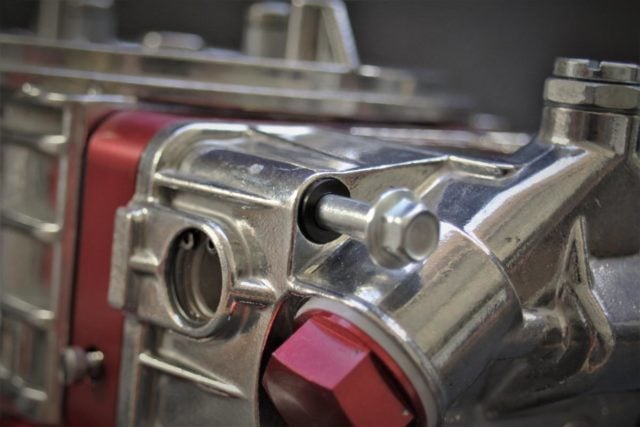
Due to needing to remove the float bowls to swap out jets, many street and race carbs now feature gaskets that resist tearing and can be reused without worry of leaking.
To illustrate how far we’ve come, let’s take a look at Quick Fuel Technology’s Street-Q series street carburetor and a similar example from their race-ready Q series line. Quick Fuel has an extensive array of carburetors ranging from wild to mild, and these two carburetors represent the middle-ground, where the finish line tends to intersect with the double-yellow lines that weave their way across the nation.
Right: QFT vacuum-secondary carburetors utilize this ingenious adjustment screw that allows restriction of the vacuum signal that opens the secondary blades. This slows the amount of air permitted through the small port.
While both carbs have no provision for a choke, which may remove any street cred for some folks, the Street-Q is clearly geared toward the serious street enthusiast. Major differences between the Street-Q and the race-bred Q series is the use of cast metering blocks and a cast throttle body on the street version, in place of fully-machined billet components on the race model.
All of the critical functionality is retained with two-circuit metering, down-leg boosters, changeable idle and high-speed air bleeds, and four-corner idle tunamility. All are items once reserved for full-race fuel mixers. Another benefit of the Street-Q carburetor is a universal throttle lever design that accommodates 700R4 bracket mounting holes, Ford automatic kickdowns, and the ability to mount linkages for Chrysler vehicles.
Both the street and race Q-Series carbs omit a choke horn for improved airflow when it matters most. Likewise, both carbs allow for fine-tuning of both idle and high-speed air bleeds. The idle mixture screws rely on air provided by the idle bleeds (outer) and the high speed air bleeds (inner) control how much air is fed to the emulsion channels of the metering block.
This means all of the tunability available to those looking to eke out every last pound-foot of torque on the track is also available to those requiring license plates and registration. And before you crawl all over us asking why would we want that on the street, remember that proper tuning also allows for better drivability and fuel economy, and that is something that any street driver can appreciate. Another added benefit is that you get all this with the Street-Q, without having to shell out the extra coin for expensive billet components.
QFT’s race series metering blocks and throttle bodies are CNC’d from billet aluminum and come packed with features not possible with cast parts. Billet offers the ability to deliver close tolerances, extremely flat surfaces, and zero porosity. QFT billet metering blocks also utilize screw-in air bleeds to determine orifice sizes whereas cast parts require drill bits and more press-in restrictions to get the calibration right.
Box-Stock Options
Choosing the right carburetor to begin with is as much part of the tuning process as swapping jets, pumps, and power valves. The difference is, if you start with the closest base carb to suit your needs, you limit the amount of tuning you’ll need to make the selected carburetor perfect for your application. Can a larger carb be made to work? Sure, but if a smaller carb takes less “work” to get right, why not start there? But, where do you start?
There is a basic formula that has been around for decades, and well, since the same math that built the pyramids is in use today, we can trust it to get us close. Simply multiply the engine’s cubic-inch displacement by the maximum RPM of the engine and divide by 3,456. That means your 350 to 360 cubic-inch small-block turning at 6,200 rpm would need a 637 cfm carburetor to feed it. Many companies offer 650 cfm carburetors, but many times, we enthusiasts shop for carbs like we shop for cams – thinking bigger is always better! In reality, if your engine is stock, gravitate toward a lower CFM rating, if you have a larger camshaft and better flowing heads, then leaning toward a higher CFM could better utilize your set up.
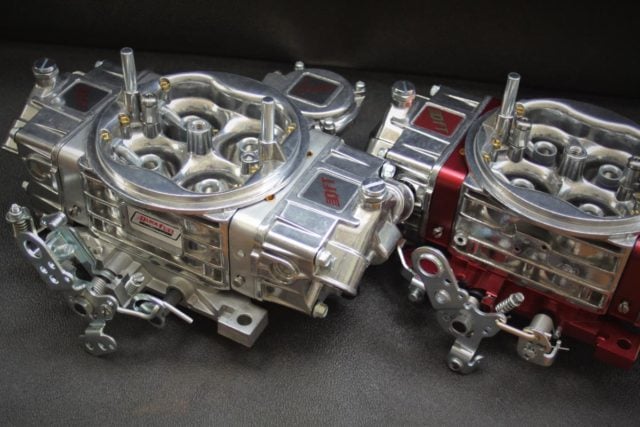
Size matters, but so does hooking up items like transmission kick-down linkage. The Street-Q has provision for such necessities as well as a fuel curve engineered for street operation.
Remember, engines feed on fuel, not air. Being able to ingest copious amounts of air does no good if the vacuum signal isn’t sufficient to draw the appropriate amount of fuel into the intake. Likewise, keep in mind that a street engine typically maxes out in the 70- to 90-percent efficiency range, while race engines will get closer to 95-percent volumetric efficiency.
That means that unless your engine somehow reaches 100-percent efficiency, the math is already skewed higher than the engine will ever need. The reality of this could be 20-percent or more! If you know your engine’s volumetric efficiency, you can include it into the formula to get closer to your engine’s exact needs, simply multiply CID x RPM x VE ÷ 3,456 = CFM.
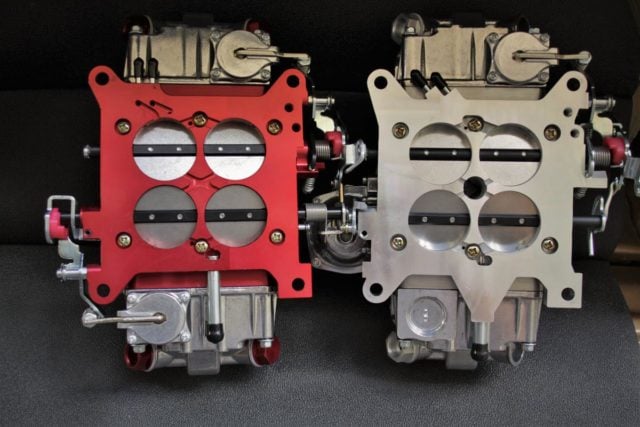
Both the Street-Q and race-bred Q-Series carbs are available with mechanical (left) or vacuum-operated (right) secondaries. Either system can produce excellent results if tuned precisely for the application, although many still agree that vacuum-secondary carbs can be more forgiving for street service.
Vacuum Or Mechanical
Once you get the right-sized carburetor for your engine, then comes the question of vacuum or mechanical secondaries? Factors such as vehicle weight, gearing, operating rpm, type of transmission, and even the choice of engine components all factor in to getting that perfect air/fuel ratio. While telling your buddies you installed a “double-pumper” might get you a second glance at the drive-in, if your car is too heavy, geared too high or has a tight converter, you may wind up bogging your way to the finish line.
Top-side of the two carbs shows the similarity (no choke) and the differences with the vacuum-secondary Street-Q's single squirter compared to the mechanical-secondary Q-Series' double-pumper status. Note that both series of carbs are available as either a mechanical or vacuum-operated secondary circuit, thus blending the view of either system's singular role.
There is a reason that many folks default to using a vacuum secondary carb on the street; they are more forgiving, because the secondary circuit is regulated by the needs of the engine, not by mechanical actuation. Not to say that a mechanical secondary can’t be made to work, but it will require more tuning to get it just right. Thankfully, Quick Fuel offers many of their carb series’ with either vacuum or mechanical secondaries.
Today’s Tunability
Thanks to decades of racer ingenuity influencing modern carburetor design, making adjustments can become part of the process without becoming a challenge. Both the Race-Q series and Street-Q series carburetors enjoy the benfits of tunability, although the end result may vary.
Both the billet and cast base-plates offer sufficient vacuum line ports as well as milled throttle shafts for the most air flow possible.
Being a race-focused carb, the original Q series’ fuel curve is weighted much more toward WOT operation than low-end transition and drivability or cold start capability.
I would tend to spend more time tuning part-throttle cruise on a street car than on a dedicated race car by changing idle air bleeds and power valves. WOT tuning is beneficial for both applications for not only the most power, but also to ensure it is running at a safe and efficient AFR. – Keith Jessee, Holley/Quick Fuel
Many of the tuning capabilities between the two carburetors is quite similar, although the initial out-of-the-box tuning of the carburetor may be better suited to either street or track operation. Likewise, differences between the billet metering block and the cast units used on the street version also include adjustable emulsion circuits. The billet units have threaded orifices for adjustable restrictions, whereas the street version utilizes drilled orifices. Many things go into tuning the emulsion of a carburetor, which include the high-speed air bleeds (which supplies air to the emulsion orifices), the emulsion orifice size, number of orifices, and even the float level.
This is advanced tuning of the carburetor, and availability to make adjustments to this circuit is reserved for those most focused on WOT operation in the Q-series carbs as an added benefit of having billet components. This doesn’t mean it’s a race-only consideration. According to Keith Jessee at Holley/Quick Fuel, “Part throttle cruise is a big focus for street carburetors, because that’s what the majority of driving consists of. Changing the bleed package or emulsion package is one of the main things we do to tailor similar carburetors for either street or race use.”
Secondary Tuning
While mechanical secondaries have always enjoyed tunability of operation due to their indifference to an engine’s airflow, even vacuum-operated secondaries are now seeing more refinement to cater to an engine’s particular needs.
Tuning Emulsion
One of the capabilities reserved for the race-version Q-Series carb and those supplied with QFT’s billet metering blocks is adjusting the emulsion restrictions within the metering block.
As air is introduced by the air jet at the top of the chamber, tuning the emulsion jets will tailor the fuel curve precisely to the engine’s needs. If the air/fuel ratio is not linear in that at mid-range, the engine tends to go lean while the low and top-end are fine. The emulsion passages can be modified to adjust the air/fuel appropriately.
The goal of tuning the emulsion restrictions is to achieve the proper air/fuel ratio for every operating range of the engine. This requires persistence and knowledge of how these systems work.
The Bottom Line
The envelope of enthusiast car’s operation has broadened greatly over the past couple of decades, and what was once considered “race-car-only” performance can now be found on new car dealer’s lots. Granted, you won’t find any carburetors under those hoods, but thanks to companies such as Quick Fuel Technology, the lowly carb that has served us so well for so long hasn’t been relegated to the pages of history. In fact, with the availability and tunability that we enjoy from modern carburetors – like these from Quick Fuel Technologies, they’ll be living a life of power, performance, and drivability, both on the street and the track!


